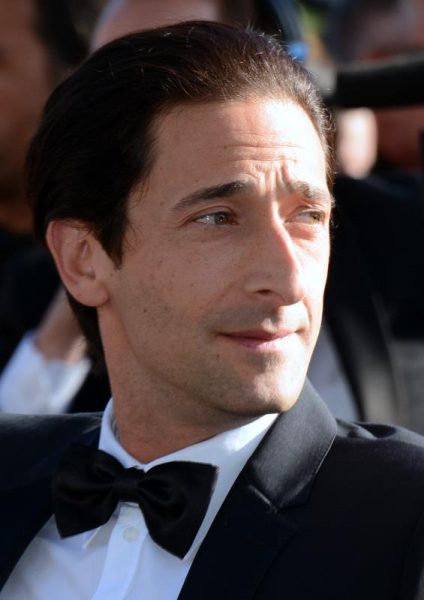You are what you act. In the realm of film, stepping into a character’s shoes is so much more than that superficial allure and elegance you often see. Many actors – in the pursuit of delivering the most jaw-dropping, mind-blowing, and heart-racing performances – quite literally “become” their character physically and mentally.
This technique, otherwise known as Method acting, is often praised for its authentic results as well as criticized for its potential dangers. For many actors, this can be challenging to consider, while others have nonchalantly embraced or overplayed this method.
On the surface level, acting can seem like a relatively fun job. You memorize lines, put on costumes, play pretend, and hang out on set with creative and engaging people. But like all jobs, there’s a reality that most people don’t consider. For acting, it’s executing it in an authentic manner.
To put that into perspective, not only do actors need to memorize pages and pages of script (and that can be a lot), but they also need to deliver it genuinely, as if they were speaking it for the first time. Their reactions and the way they display emotions also have to be read as genuine. Moreover, some actors have to memorize how to perform additional activities on the side, such as a dance, a walk, or an accent. All the while, they can’t look at the camera or break character. They must always be in a state that best impersonates their character. This is often why actors have to shoot multiple takes, even for just one sentence, to get a scene just right.
In our increasingly critical society, where every detail is scrutinized, clichéd acting can doom a film to irrelevance. So how does an actor realistically capture a character’s role? One infamous technique is method acting.
Method acting is the process in which an actor adapts to their character’s physical or emotional state through a range of techniques. This, in theory, veers away from clichéd acting and instead exhibits originality in their portrayal of a character. No wonder that Leonardo DiCaprio ate raw bison and endured hypothermic conditions during his role as Hugh Glass in The Revenant; he was nominated six times for the Academy Award for it.
However, despite these great performances, this level of dedication to play a role can come with major health risks ranging from physical strain and injury to mental health issues such as trauma, fatigue, depression, anxiety, sleep deprivation, and their accompanying psychotic disorders.
The Birth of Method Acting
In the early 20th century, Russian actor and theater director Konstantin Stanislavski set out to revolutionize the novice world of stagecraft. He created a systematic approach to acting through a combination of techniques from various theaters and entertainment companies, calling it “the system.” Some could say he was feeling rather creative that day.
Thus, the method was born out of the system, designed to allow actors to realistically experience their roles rather than trying to imitate them. Stanislavski believed that by reforming their emotional and mental outlook, actors’ performances would accurately embody their characters.
Stanislavski then taught this innovative approach to his students, and when they performed in the United States, their techniques piqued many American actors’ interests. Deciding to commercialize this opportunity, a few of Stanislavski’s students relocated to the United States and established the American Laboratory Theatre. There, they began teaching the method to a new generation of actors who would go on to star in Hollywood, popularizing the mechanisms of method acting, and the rest became history.
Over time, three students of Stanislavski’s system stood out: Stella Adler, Lee Strasberg, and Stanford Meisner, all of whom would become prominent figures in method acting. They defined “the method” in their unique way, each emphasizing their techniques and beliefs. Thus, the modern version of “the method” is essentially a combination of three, each a refined version of the original system, all aimed at helping actors connect more deeply with their characters.
Adler and Strasberg, now two of the most famous method coaches, parted ways due to their differing interpretations of “the method.” Strasberg, whose students included Al Pacino and Marilyn Monroe, focused on the emotional aspects of the system. He advocated for the use of personal experiences to portray a character, with the belief that the most natural performance could only come from immersing yourself in real experiences or events, leading to a genuine expression of emotion.
On the other hand, Adler, who trained well-known actors like Marlon Brando and Robert De Niro, emphasized the importance of “given circumstances.” This meant encouraging her students to draw their performances from their imaginations rather than their personal experiences.
Adler heavily disagreed with this approach, stating, “Drawing on the emotions I experienced – for example, when my mother died – to create a performance is sick and schizophrenic.” Despite her intense statement, Strasberg’s emphasis on personal experience is agreed to be the definition of the method, which may explain why it remains so controversial today.
Actors Who Took Their Roles to the Next Level
Several actors have made headlines for their extreme dedication to Method Acting. These on-set moments in acting history highlight the lengths actors will go through to embody their characters despite the detrimental impact on their health. From losing or gaining significant amounts of weight to living in isolation, these actors push the boundaries of what it means to be a character.
Natalie Portman in Black Swan
Natalie Portman’s role as Nina, a dedicated ballerina in Darren Aronofsky’s 2010 film Black Swan, is one of her most notable performances. The film follows Nina’s obsession with perfecting the contrasting roles of the White and Black Swan in a ballet production of Swan Lake. Portman’s preparation for the role mirrored her character’s dedication, involving rigorous training with former New York City Ballet dancer, Mary Helen Bowers.
In addition to ballet training, she incorporated swimming a mile a day into her routine. Her training schedule was rigorously brutal, starting with two hours of ballet a day for the first six months for strengthening and injury prevention. Later, at about six months, she increased to five hours a day, which included swimming and ballet classes. Two months before filming, she added choreography to her routine, extending her training to approximately eight hours a day. On top of this, Portman lost 20 pounds and lived primarily off carrots and almonds in order to achieve the slender frame of a ballerina.

This simplistically strict and dreary lifestyle helped her understand the vigorous competitiveness of her atmosphere and the self-criticism of being a ballet dancer. This led to her capturing Nina’s internal and external character impeccably well in the film. Despite the physical and emotional challenges, Portman’s performance stands as a remarkable illustration of the lengths an individual can go to achieve perfection, ultimately earning her an Academy Award for Best Actress.
Asahi Ono ’25 said, “You can tell she was very passionate about her role, but I have to say that couldn’t have been very healthy for her to go to such lengths. I used to do ballet for ten years, and I know firsthand just how rigorous lessons can be. Sometimes just three hours was enough to leave me sore for weeks, so I can’t even imagine just how draining all that work must be.”
On a similar note, Cindy Zhou ’25 said, “I admire her commitment to the role, being able to train every day with only the motivation of acting is presumably hard to do.”
Al Pacino in The Scent of A Woman
Al Pacino, known for his intense use of method acting, was fully committed to his role in Scent of a Woman where he played a blind man, Slade. He trained with a school for the blind to understand how a visually impaired person performs day-to-day tasks. Initially, he was fitted for lenses that would simulate blindness, but he chose not to use them due to potential eye damage from prolonged use. Instead, he decided to unfocus his eyes while playing Slade, stimulating the look of blindness.

Ironically, despite avoiding the lenses, Pacino ended up injuring his cornea when he fell into a bush because he couldn’t see. He continued this method even when performing daily tasks, such as pouring water. By the time filming began, he used a cane and asked the cast and crew to interact with him as though they would with a blind person, relying only on auditory cues. He had adapted to this lifestyle so well that after filming ended, he admitted to never looking or interacting with his co-stars. Despite the risks and injuries, Pacino’s dedication to his craft was evident in his Oscar-winning performance, demonstrating his willingness to fully embody his role as a blind man.
Nadia Zaman ’25 said, “It’s amazing how far actors like Al Pacino are willing to go to prepare for their roles. I’m impressed at his skills and self-control. It takes a lot of self-control and dedication to commit to practicing being blind and live such a big portion of their lives like this. It’s always great to see actors going above and beyond to play the best version of their characters.”
Adrien Brody in The Pianist
Roman Polanski’s Holocaust drama, The Pianist, is a deeply moving film that tells the true story of Wladyslaw Szpilman, a concert pianist who spent two years hiding in the Warsaw ghetto during the German occupation of Poland in World War II. To fully embody the character of Szpilman, Adrien Brody practiced the piano for four hours a day to perfect his compositions of Chopin. Brody also made significant personal sacrifices, including giving up his apartment, selling his car, disconnecting his phones, moving to Europe, and even leaving his significant other. He also underwent an extreme diet to lose 30 pounds to mimic the physical and mental state of Szpilman, who had to scavenge for scarce food during the Holocaust. Brody described the experience of starvation as an “emptiness” that he hadn’t experienced before.

In addition to these physical transformations, Brody immersed himself in Szpilman’s memoirs and educated himself about the Holocaust, making the production not only a physically grueling experience but also a mentally distressing one. In an interview with Britain’s The Guardian, Brody confessed that he was depressed for a year after the film was completed, describing the aftermath as a “mourning” in addition to disturbance during the making of the film. “I was very disturbed by what I embraced in making that film, and of the awareness that it opened up in me,” Brody said. However, it all paid off for him as he became the youngest person to win the Oscar for Best Actor in 2002 at the age of 29 as well as receiving a César Award.
Maheen Alam ’25 said, “It’s stunning how far actors are willing to go to play the best version of their characters. I could never subject myself to those conditions, no matter how passionate I am with acting. I really admire Adrien Brody’s lifestyle changes to act in the film, but I think it’s kind of concerning how actors are committing themselves to lifestyles like this that can potentially be risky.”
Method acting is the process in which an actor adapts to their character’s physical or emotional state through a range of techniques.

